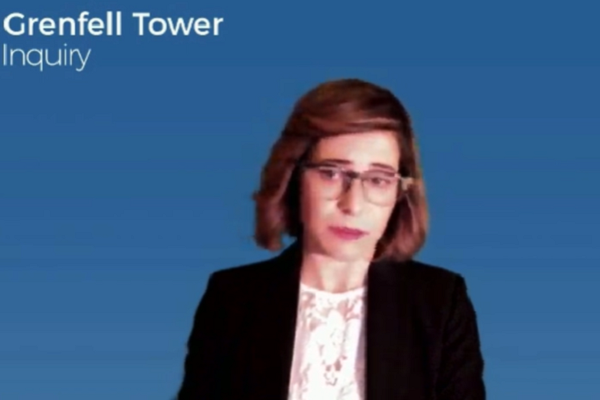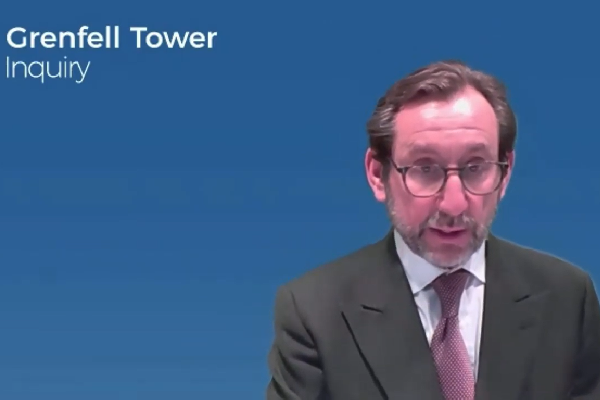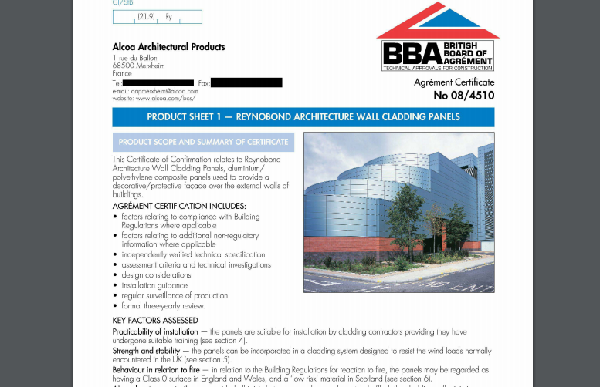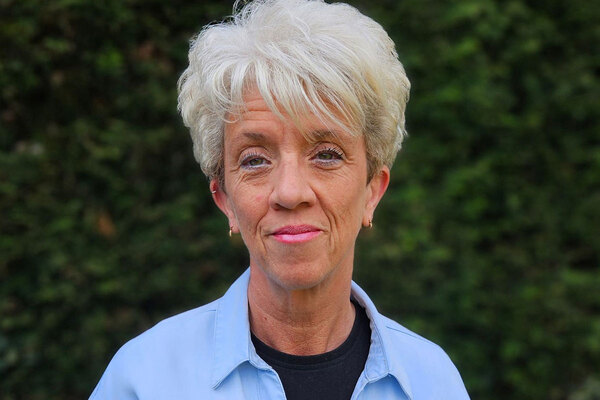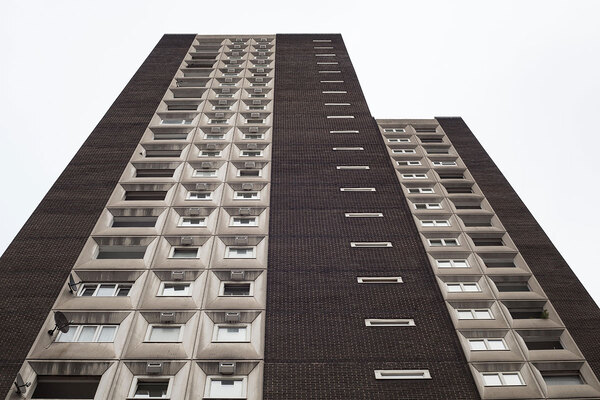Grenfell cladding firm used ‘hard tactics’ in obtaining certificate for product, inquiry hears
The manufacturer of the cladding panels used on Grenfell Tower used “hard tactics” in negotiations with a UK certifying body as it sought a certificate implying the panels were suitable for use on high-rise buildings, documents disclosed by the inquiry today reveal.
Hamo Gregorian, a former project manager at the British Board of Agrément (BBA), led the process of producing a certificate for the Arconic cladding panels later used on the tower.
The certificate – provided by the UK’s most respected certifier of construction products – said that the panels “may be regarded” as having a “Class 0” surface, implying they met the required standard in official guidance for use on a high rise.
But the inquiry has previously heard that Arconic provided no test to substantiate this claim for the highly combustible polyethylene-cored variant of the cladding later used on Grenfell and withheld tests showing that it burned ferociously when bent into ‘cassette’ form (see box: what did the BBA certificate say?).
Mr Gregorian was asked about a series of meetings Arconic held with the BBA in 2006 as it discussed obtaining the certificate.
The inquiry has already heard that Arconic had decided shortly before this that a BBA certificate was crucial in winning residential jobs in the UK market.
The meeting notes – produced by Arconic staff and not shared with the BBA – show that in November 2006 Arconic issued a “threat to stop all dealings with the BBA unless a satisfactory solution was found” to the question of certifying its Reynobond PE 55 panels.
The note also says that Arconic’s representatives said it “could be better to validate the [cladding] material rather than the whole system”.
It adds: “Very positive meeting and hard tactics may have helped our situation.”
Asked today what he understood this reference to “hard tactics” to be, Mr Gregorian said he “could not remember the details of this meeting at all”, and added that it may have involved the marketing side of the business.
Further documents show that the BBA discounted the price for its work from £24,000 to £16,500 following this meeting.
Mr Gregorian had earlier explained that he knew almost nothing about fire safety rules and relied on his specialist colleague Brian Haynes – who died earlier this year – for this element of the work.
Mr Gregorian told the inquiry that Mr Haynes had phoned Sarah Colwell, principle consultant at the Building Research Establishment (BRE), to advise on the fire safety questions of the certificate.
What did the BBA certificate say?
The BBA certificate is a crucial document in understanding why the highly combustible cladding panels were used on Grenfell Tower.
It was provided to the team that refurbished the building, and several witnesses have said it assured them the panels had a ‘Class 0’ rating – meaning they could be used on a high rise.
The certificate said the Reynobond 55 cladding panels – available with either a polyethylene or fire-retardant core – “may be regarded as having a Class 0 surface”.
It said this was based on two European tests in which both the polyethylene-cored and fire-retardant panels had obtained a ‘Class B’ rating, and tests to English standards on the fire-retardant version only, which had resulted in a ‘Class 0’ rating. Taken together, the BBA concluded that these results meant both the polyethylene and fire-retardant products could be considered Class 0.
But both the European tests were on cladding panels fixed to a wall with rivets. When tested in the other possible means of fixing them (bending them into cassettes and hanging them from rails) they had burned catastrophically and achieved a Class E. Arconic did not share this test result with the BBA despite it having been carried out three years before the certificate was issued.
The BBA certificate did not make it clear that European tests had been carried out only on the riveted panels, despite containing a diagram showing both rivet and cassette fixings.
It also said that the tests had been carried out on grey/green and gold-coloured panels, and specifically noted that other colours may not achieve the same rating. The panels used on Grenfell Tower were smoke silver.
Arconic provided the BBA with test data from French testing facility CSTB which showed that the cladding panels had a European fire classification of B – an alternative standard to Class 0 in English guidance.
But this test only covered the panels being fitted to a wall with rivets. Mr Gregorian explained that this was seen as acceptable because the certificate was designed to only assess the product, rendering the means of attaching it “irrelevant”.
“Somebody at the BBA decided it was safer to approve the product than a system because control over a system is much more difficult than control over a product,” he said.
But the BBA did not realise that when bent into cassette shape, the fire classification of the panels plummeted to a Euroclass E, said to be “close to spontaneous combustion” in emails disclosed yesterday.
With regard to the English standard of Class 0, Arconic provided test data only for a fire-retardant version of the panel, despite the certificate purporting to cover both of them.
The company had a 1997 test on a different brand of polyethylene panels, but did not provide this to the BBA.
Further documents disclosed today showed that “surveillance” of the manufacture of the product – required as part of the certification – was delegated to the CSTB.
But in the two years Mr Gregorian spent at the BBA following the issuance of the certificate, no audit report was received from the CSTB.
The inquiry continues with further evidence from BBA witnesses on Monday.
Sign up for our weekly Grenfell Inquiry newsletter
Each week we send out a newsletter rounding up the key news from the Grenfell Inquiry, along with the headlines from the week
Already have an account? Click here to manage your newsletters



